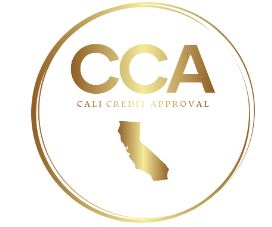Your cart is currently empty!
It’s Never Too Late to Build Your Future: Your 5-Step Roadmap from Subprime Credit to Financial Freedom
Even if you’re starting with a low credit score, you can take simple steps to climb the ladder toward better financial opportunities. This five-step roadmap shows how subprime customers can go from rebuilding credit with a modest used car to creating lasting wealth for the next generation.
Step 1: Credit Score 450 – Start with a Reliable First-Time Buyer Vehicle

Start your journey with a reliable, affordable vehicle. Even with a low score, you can finance a dependable used car. Choose a modest model to manage payments wisely. Choosing a modest model limits costs and builds discipline. By managing this loan responsibly (making payments on time and in full), you begin adding positive accounts to your credit report. This foundational step gets you mobile and starts demonstrating financial responsibility. Making these on time sets your foundation for credit growth.
Step 2: Credit Score 600 – Make Every Payment On Time

Build credit by making every payment on time. On-time payments are the biggest factor in improving your score. Set up reminders, use autopay, and stay consistent to prove your reliability to lenders. Consistency is key: whether it’s your car payment, utilities, or credit cards, always pay by the due date. On-time payments make up the largest portion of your score, so showing a perfect track record pushes your score up. Use reminders or automatic payments (calendar alerts, apps) to stay on schedule. This habit not only raises your credit rating but also instills a solid financial routine for future goals.
Step 3: Credit Score 750 – Upgrade Your Vehicle

Upgrade to a better vehicle—your consistency is paying off. With a stronger score, you can refinance or trade in for a newer, still-modest car. Your improved credit opens better interest rates and terms. With a mid–high 700s score, you qualify for better loans and rates. You might refinance your old loan or trade in for a nicer car. Keeping up with payments on a higher-quality vehicle further improves your credit history. The key is that lenders see your long string of on-time payments and feel confident lending to you. Upgrading symbolically rewards your diligence and shows your improving financial situation.
Step 4: Credit Score 800 – Buy Your First Home

Use your strong credit to buy your first home. With an 800+ score, you’re a prime borrower. Now is the time to invest in stability. A starter home adds equity while continuing your upward credit path. At this stage, you’re seen as a prime borrower. You can secure a mortgage on a small, welcoming starter home. Use your saved funds for a down payment, and continue your payment streak with your mortgage. Owning a home is a major milestone: it builds equity while keeping your credit history spotless. This step transforms your consistency into a valuable asset and provides stability.
Step 5: Prime Credit – Build Generational Wealth

Achieve stability and create generational wealth. With prime credit, you’ve reached financial stability. Now the focus can shift to long-term goals: investing, saving, and teaching the next generation. Passing down assets (like the keys to this home) or financial knowledge helps build lasting wealth for your family. At this point, your high score unlocks the best loan terms and opportunities. Your journey shows that it’s never too late: a consistent roadmap of smart choices leads not only to a great score but also to a strong financial legacy.
Each step is a milestone on the green-and-blue path to a better credit future. By following this progression — affordable car, on-time payments, upgrades, homeownership, and finally generational wealth — you turn small actions into major achievements. It truly is never too late to begin building your future.
Remember: It’s never too late to start. Every step forward builds the life and legacy you deserve.
Tags: credit improvement, used car financing, generational wealth
🔒 Disclaimer:
The steps outlined in this roadmap are based on hypothetical examples and are intended for educational purposes only. Individual credit outcomes may vary based on personal financial history, behavior, and lender criteria. This content does not guarantee specific results and should not be considered financial advice.

Leave a Reply